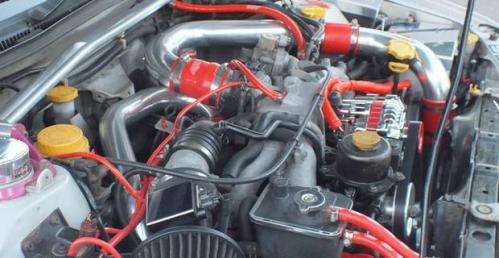Researcher aims to use waste heat to make cars more efficient

Yanliang Zhang wants to make vehicles more efficient by using a resource most people aren't even aware of—the waste heat that results from the inherent inefficiency of engines when converting fuel into energy.
Zhang, an assistant professor with Boise State's Department of Mechanical and Biomedical Engineering, is working on a project funded by the U.S. Department of Energy. The project, "Nanostructured High-Temperature Bulk Thermoelectric Energy Conversion for Efficient Automotive Waste Heat Recovery," received $8 million from the DOE's Vehicle Technology (VT) Program for a total period of four years.
Zhang began the project as one of the principal investigators in 2011 while working for research startup and prime contractor GMZ Energy Inc. After joining the faculty at Boise State in February 2013, Zhang was awarded $250,000 by GMZ to continue his work as one of the project subcontractors, with an additional $88,000 anticipated to supplement the expanded scope of work. Other partners include automotive and industrial technology giants Honda and Robert Bosch LLC, as well as Oak Ridge National Lab and University of Houston.
Zhang's goal is to develop and test a thermoelectric waste heat recovery system capable of enhancing the fuel efficiency of a light-duty vehicle by 5 percent. The efficiency improvement would result from the direct conversion of engine waste heat to useful electric power using significantly improved nanostructured bulk thermoelectric materials that the team has developed.
According to the information on the Department of Energy's VT Program website, only about 25 percent of a gasoline vehicle's fuel energy is used to drive the wheels, and more than 70 percent is lost as waste heat in the exhaust gases and to the engine coolant.
Thermoelectric generators have the capability to directly convert waste heat from the hot engine exhaust into electricity that can power vehicle auxiliary loads and accessories. Thermoelectric generators consist of an array of semiconductor elements that produce a voltage when placed across a temperature gradient without releasing the carbon dioxide and other emissions that typically result from fossil fuel consumption. The process developed by Zhang and his research partner uses post catalytic converter heat exchangers to remove heat from the exhaust gases and deliver it to the thermoelectric devices, which convert the heat to electricity.
Ultimately, after testing and optimization, the team's goal is to have a plan for scale up and commercial production when the project reaches completion in the summer of 2015.
Provided by Boise State University


















